These luxurious hotels had a bright future in front of them. And no matter what the circumstances or the reasons for their demise, it’s undeniable that they’ve now become something else. What was once a place filled with people and staff, honeymoon couples, families and overnight visitors, is now occupied by rodents, rats, and mold.
Shady hallways, lobbies left in ruins, rooms that are slowly decaying and structures that are crumbling. This is what’s left of their former glory. Neglected for years and left to rot, they are on the path to be gradually reclaimed by nature.
Here are a few hotels that shut their doors to the public a long time ago.
Ryugyong Hotel – Pyongyang, North Korea
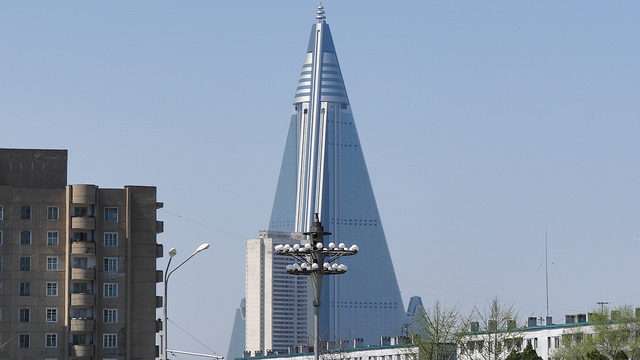
Construction of this colossal, pyramid-shaped monolith began in 1987 and it was meant to be opened for the World Festival of Youth and Students in 1989. Had it been completed on schedule, the skyscraper would have held the title of “world’s tallest hotel.” It is instead listed in the Guinness World Records as the tallest unoccupied building — but judging by recent news reports, this could be about to change.
Ryugyong Hotel is known as the 105 Building because of its number of floors. Dogged by delays, allegedly including crooked elevator shafts and poor quality construction materials, the exterior was not completed until 1992.
Work then ground to a halt as North Korea fell into economic crisis after the fall of the Soviet Union.
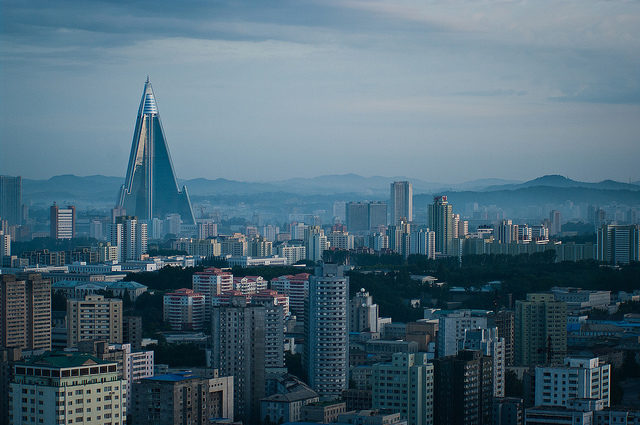
After that, the Ryugyong Hotel had a long hiatus of apparent abandonment until finally, in 2008, construction was resumed by an Egyptian construction company.
The grand opening was then planned to celebrate the hundredth anniversary of the birth of Kim Jong-un’s grandfather, Kim Il-sung, in 2012. Despite positive reports on their progress released in July 2011, this didn’t happen.
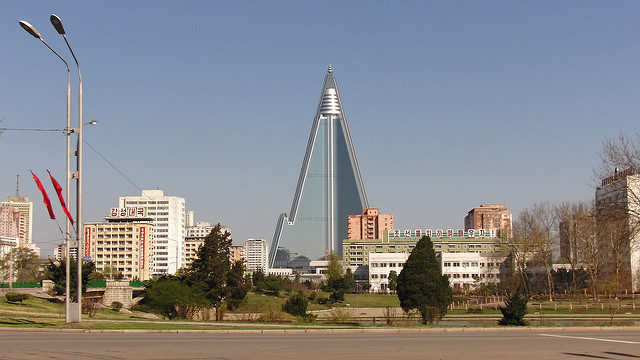
Again an opening was announced in 2013, but this also didn’t materialize.
Rumors of construction work restarting and lights inside the vacant hotel have been circulating since the fall of 2017. In April 2018, Nick Visser wrote for Huffington Post that Ryugyong Hotel “appears to have a new LED-lighted structure on its crown … broadcasting footage of the North Korean flag.”
Grossinger’s Catskill Resort – New York
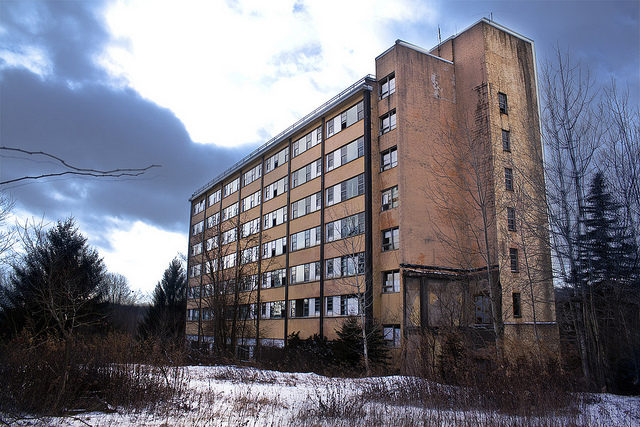
This abandoned hotel was one of the largest Borscht Belt summer resorts. Located in the Catskill Mountains, near the village of Liberty, New York, the hotel welcomed approximately 150,000 visitors annually in its heyday. It was primarily a kosher establishment, catering for Jewish clients from New York city and favored by a variety of celebrities.
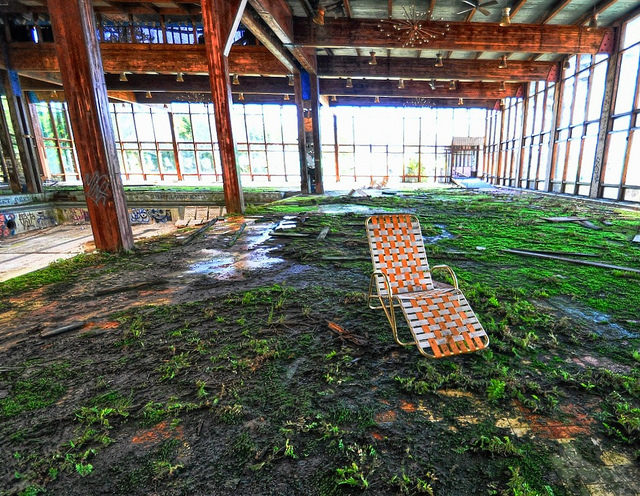
Grossinger’s huge 1,200 acre site had its own airstrip, ballrooms, auditoriums and sports grounds, complete with its own post office and a landing strip. It was also a very popular skiing spot, famed for being the first place to use artificial snow starting from 1952.
The resort was reputedly the inspiration for Kellerman’s hotel in the ’80s cult classic, Dirty Dancing.
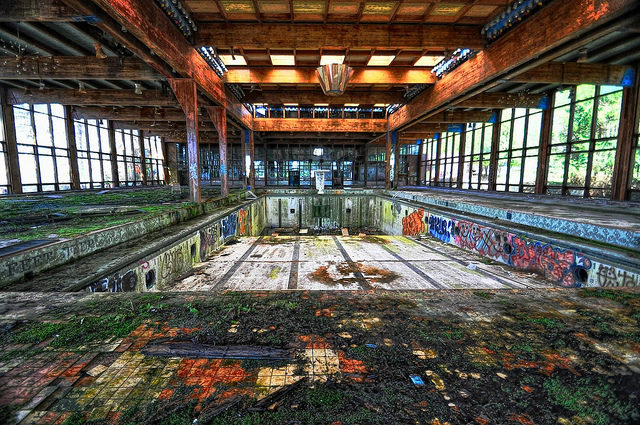
After decades of activity, Grossinger’s hotel and main resort areas closed in 1986 and the property was sold to Servico. The Grossingers Country Club golf course remained open until 2017, when it was closed for renovation.
The hotel has become very popular with photographers and graffiti artists.
According to Forbes, it’s current owner, Louis R. Cappelli, made an application to the New York State Department of Environmental Conservation in August 2017 to begin cleaning up the site. We have yet to hear of any further developments.
Ducor Palace Hotel, Liberia
Located on Ducor Hill — the highest point in the city of Monrovia — overlooking the Atlantic Ocean, the Ducor Palace Hotel was one of the first international-class hotels in the country of Liberia, in West Africa. Established in 1960, it was known for years as one of the most luxurious places to stay in all of Africa.
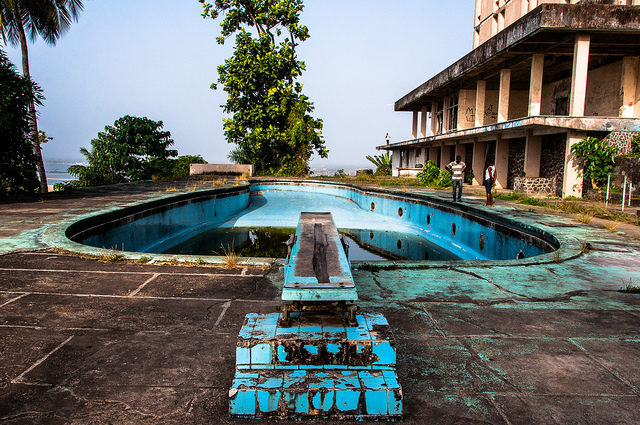
Part of Intercontinental Hotels chain and counting 106 rooms on eight stories, the five-star hotel was often used as a meeting place for prominent African leaders. But by the 1980s, Liberia was in serious political turmoil. And with that kind of instability looming over Liberia, Intercontinental decided to pull the plug on the Ducor Palace in 1989, right before the beginning of the First Liberian Civil War.
During the war, the hotel endured extensive damage and considerable looting after. Also, in a time of despair, many displaced residents of Monrovia found a safe haven in the building’s empty rooms.
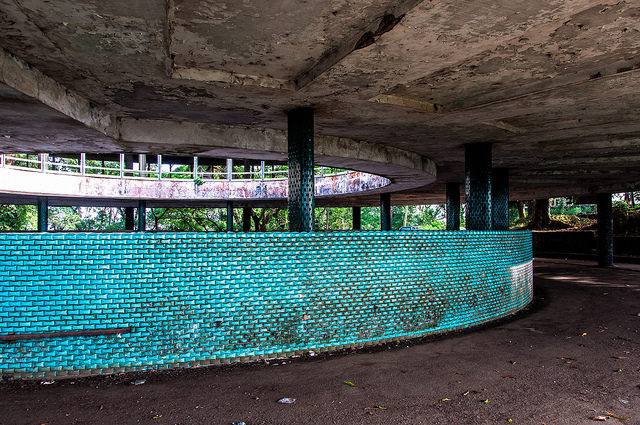
In 2007, representatives of the Ministry of Justice evicted the squatters from Ducor Palace. In 2008, the Government of Liberia signed a lease with the Libyan Government including plans to renovate the property, scheduled to be completed by June 2010.
But after the project was delayed several times and then the outbreak of the 2011 Libyan civil war, the Ducor Palace renovations were cut short.
Today the resort is completely in ruins and continues to deteriorate.
Diplomat Hotel, Philippines
This abandoned resort, located on the top of the Dominican Hill, Baguio, definitely has the scariest backstory. Many locals believe that the place is actually haunted. Its official name is Dominican Hill Retreat House.
Built in 1911 as a seminary and vacation house by the Dominican Order of the Catholic Church, the place saw a great deal of bloodshed during World War II. Japanese forces invaded the property and turned it into their headquarters, and the Japanese secret police committed unspeakable barbaric acts such as torturing, raping and decapitating priests, nuns, and refugees.
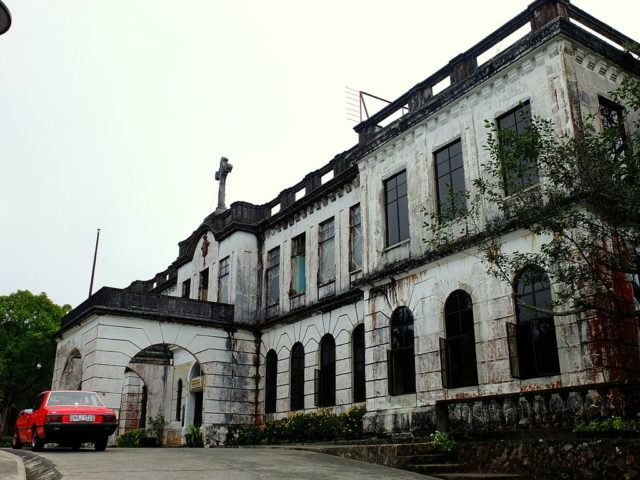
During the liberation of the Philippines in April 1945, U.S. forces bombed the place, partially destroying the right wing of the building, and the remaining Japanese forces inside committed suicide. It underwent a process of restoration after the war.
In 1973, Diplomat Hotels, Inc. acquired ownership of the property and thoroughly remodeled the interior into a 33-bedroom hotel. It was owned by Tony Agpaoa who was a famous entrepreneur and faith healer. But to some, he was nothing more than a scam artist.
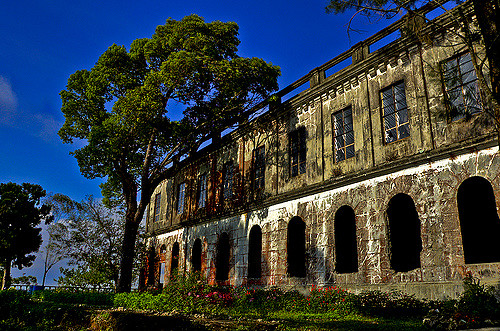
Agpaoa passed away in 1987 after suffering a heart attack and brain hemorrhage. Following his death, the property quickly fell into despair and was shut down.
It was left to decay for more than 30 years. Today, the hotel still remains empty but the gardens have undergone extensive rehabilitation through the efforts of the city government. The property, now renamed as the Dominican Heritage Hill and Nature Park, offers spectacular panoramic views across Baguio City.
Hotel Belvédère Du Rayon Vert, France
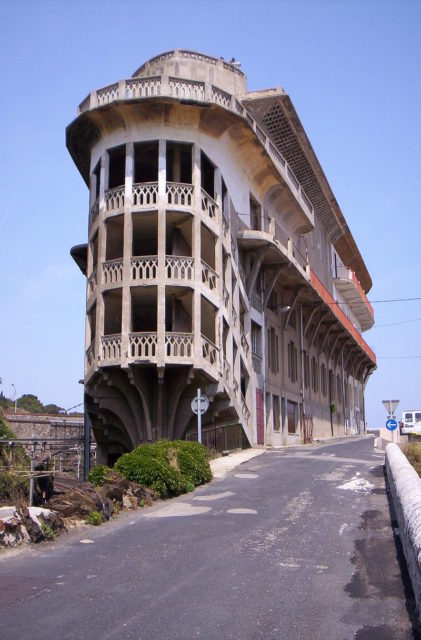
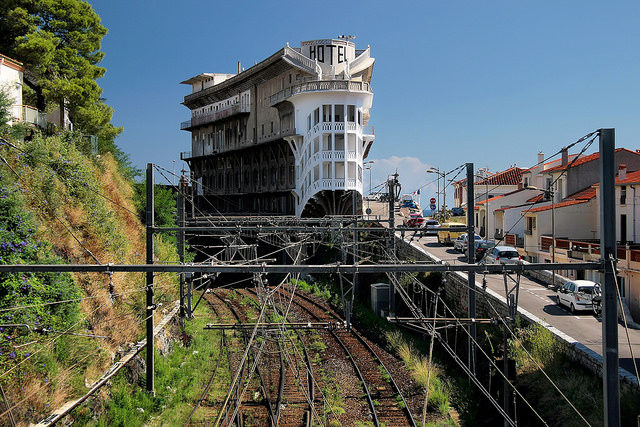
Designed in Art Deco style and designed by architect Léon Baille, the Hotel Belvedere had it all: a ballroom, its own cinema, and a tennis court on the roof. It was built between 1928 and 1932 in the coastal commune of Cerbère.
Since 1983, this gorgeous looking hotel — which resembles a ship — has stayed closed. But on a positive note, in 1987 the building was protected under the list of historic monuments. And today most of the Belvedere Hotel is open for visitors, with a few apartments being brought back into use.
